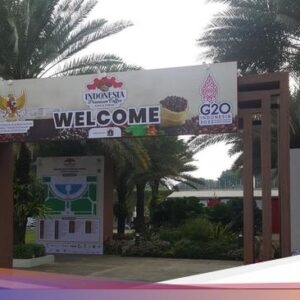Jakarta – Minister of Agriculture (Mentan) Andi Amran Sulaiman is currently aggressively developing coffee to achieve the world number one target. Therefore, the Ministry of Agriculture took various steps, one of which was sending envoys to study in Vietnam.
“The first step that has been taken is that coffee experts were assigned to Vietnam to study techniques to increase coffee productivity,” said Amran in a release, Saturday (23/9/2017).
Apart from that, promoting various coffee breeding development programs, increasing productivity, farming management, processing and marketing. The Minister of Agriculture believes that Indonesia has the potential to become the world’s largest coffee producer.
“Optimism must be achieved, considering that Indonesia is a tropical country with a mountainous region that stretches from the tip of the island of Sumatra to Papua, which has potential for coffee,” he said.
ADVERTISEMENT
SCROLL TO CONTINUE WITH CONTENT
Amran said that Indonesian specialty coffee is already known in Europe and America and is currently a world trend. Indonesian specialty coffee includes Gayo coffee, Mandailing coffee, Lampung coffee, Bajawa coffee, Toraja coffee, Baliem valley coffee.
“Currently there are 14 types of Indonesian coffee that have received Geographical Indications (GI) certificates so they have unique qualities that can add value to trade,” he explained.
Amran hopes that next year Indonesian coffee will become number two in the world. This is done by increasing quality and productivity to 1.0 ton/ha. The following year it was improved again to become world number one.
“Furthermore, the 2017 APBN-P and 2018 APBN will be boosted by increasing productivity, developing 8,700 ha of coffee areas, seeding 3 to 4 million stems per year, post-harvest and marketing,” explained Amran.
Meanwhile, the Head of the Ministry of Agriculture’s Data and Information Systems Center, Suwandi, added that the Ministry of Agriculture is pursuing various strategies to boost the competitiveness of Indonesian coffee.
First, improve the seed system, fertilizer and water management so that next year productivity increases to 1 ton/ha. Second, a replanting program to replace less productive coffee plants.
“Third, expand the area planted with Arabica coffee which has high economic value so that the Robusta and Arabica coffee populations become balanced,” he said.
Fourth, developing coffee with special types of coffee (specialty coffee) from various regions in Indonesia which have high value.
Fifth, invite the relevant agencies, namely the Ministry of Industry, Ministry of Trade, BPOM together with the private sector, the Association of Indonesian Coffee Entrepreneurs and Farmers to more intensively promote Indonesian coffee at home and for export abroad, especially to the United States, Germany and Japan and try to control imports.
“Coffee development is focused on 10 central provinces, namely South Sumatra, Lampung, North Sumatra, East Java, Bengkulu, Aceh, West Sumatra, South Sulawesi, Central Java and East Nusa Tenggara with a contribution of 87 percent of national production, as well as 24 other provinces with a share 13 percent,” he explained.
Suwandi said that based on BPS data, coffee production in 2016 amounted to 21,773 tons worth IDR 14.5 trillion, which was enjoyed by 1.9 million coffee farming households.
Coffee exports in January-August 2017 amounted to 335,027 tonnes or an increase of 50 percent compared to the same period in 2016 of 212,514 tonnes. Coffee also contributed to a trade balance surplus of USD 823 million.
“Likewise, based on BPS data, coffee imports from January to August 2017 amounted to 8,776 tons or decreased by 63 percent compared to the same period in 2016 of 23,550 tons. This coffee import and export data shows a sign of increasing quality and competitiveness of Indonesian coffee products on the world market,” concluded Suwandi
Indonesia’s coffee position is currently ranked fourth in the world after Brazil, Vietnam and Colombia. Based on data from the Food and Agriculture Organization (FAO), Brazil’s coffee area is almost 2 million ha with a productivity of 1.4 tonnes/ha.
Meanwhile, the coffee area in Vietnam is 589 thousand ha with a productivity of 2.3 tons/ha and Colombia has an area of 795 thousand ha with a productivity of 0.9 tons/ha. Meanwhile, Indonesia’s coffee area covers 1.23 million ha, of which 1.19 million ha belongs to smallholder plantations with a productivity of 0.6 tons/ha.
The quality of Indonesian coffee is not yet stable, so exports are currently dominated (99 percent) in the form of coffee beans/rice (coffee excluding roasted and decaffeinated) while other countries already export processed coffee.
(ega/ang)






